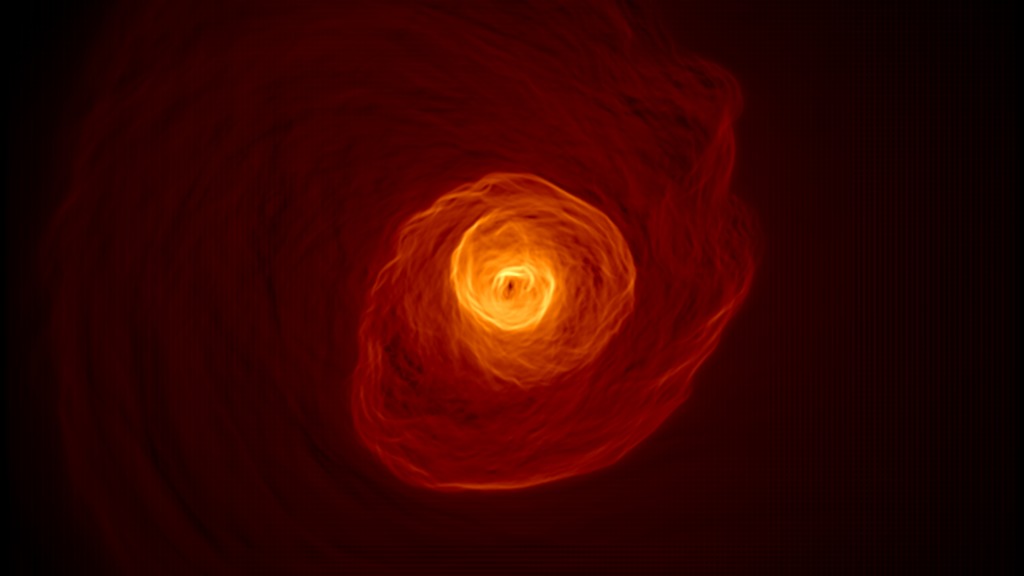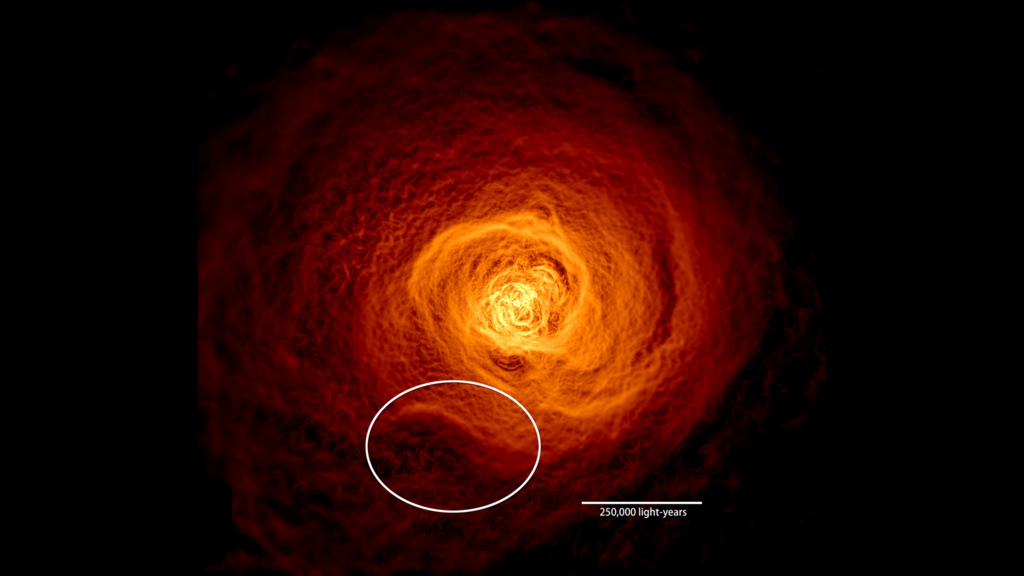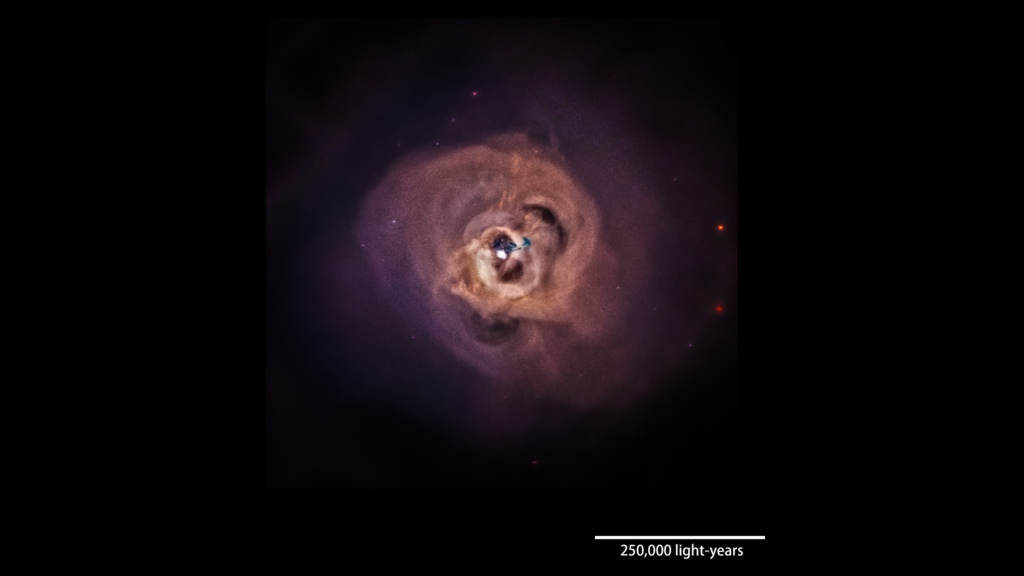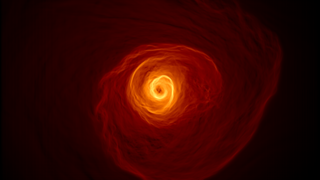Universe
ID: 12659

Billions of years ago, a small galaxy made a flyby of the massive Perseus galaxy cluster. The flyby made a gravitational disturbance that caused a cosmic shock wave, which generated ripples of hot gas in Perseus roughly twice the size of our own Milky Way. NASA’s Chandra X-ray Observatory provided researchers with extremely detailed images of Perseus, which they compared to a computer simulation to better understand the initial disturbance. One feature they observed was a mysterious, curved feature known as the "bay.” According to the simulation, the smaller galaxy's flyby mixed the layers of hot and cool gas within Perseus. This caused the cooler gas to spiral outwards, producing giant waves that persist for hundreds of millions of years and forming the bay, whose “shore” is a profile view of the wave itself. Scientists were able to make extremely difficult measurements that clarified the relationship between the size of the waves and the strength of the cluster's magnetic field. Watch the video to see the giant ripples in action.


Colossal Cosmic Waves



Source Material
For More Information
Story Credits
Lead Visualizer/Animator:
John ZuHone (Harvard-Smithsonian Center for Astrophysics)
Lead Producer:
Scott Wiessinger (USRA)
Lead Scientist:
Stephen A. Walker (USRA)
Lead Writers:
Francis Reddy (Syneren Technologies)
Raleigh McElvery (Intern)
John ZuHone (Harvard-Smithsonian Center for Astrophysics)
Lead Producer:
Scott Wiessinger (USRA)
Lead Scientist:
Stephen A. Walker (USRA)
Lead Writers:
Francis Reddy (Syneren Technologies)
Raleigh McElvery (Intern)
Please give credit for this item to:
NASA's Goddard Space Flight Center.
Music: "The Undiscovered" from Killer Tracks.
Images courtesy of NASA Goddard Space Flight Center/Stephen Walker et al.
NASA's Goddard Space Flight Center.
Music: "The Undiscovered" from Killer Tracks.
Images courtesy of NASA Goddard Space Flight Center/Stephen Walker et al.
Short URL to share this page:
https://svs.gsfc.nasa.gov/12659
Keywords:
SVS >> HDTV
SVS >> Astrophysics
SVS >> App
NASA Science >> Universe
https://svs.gsfc.nasa.gov/12659
Keywords:
SVS >> HDTV
SVS >> Astrophysics
SVS >> App
NASA Science >> Universe








